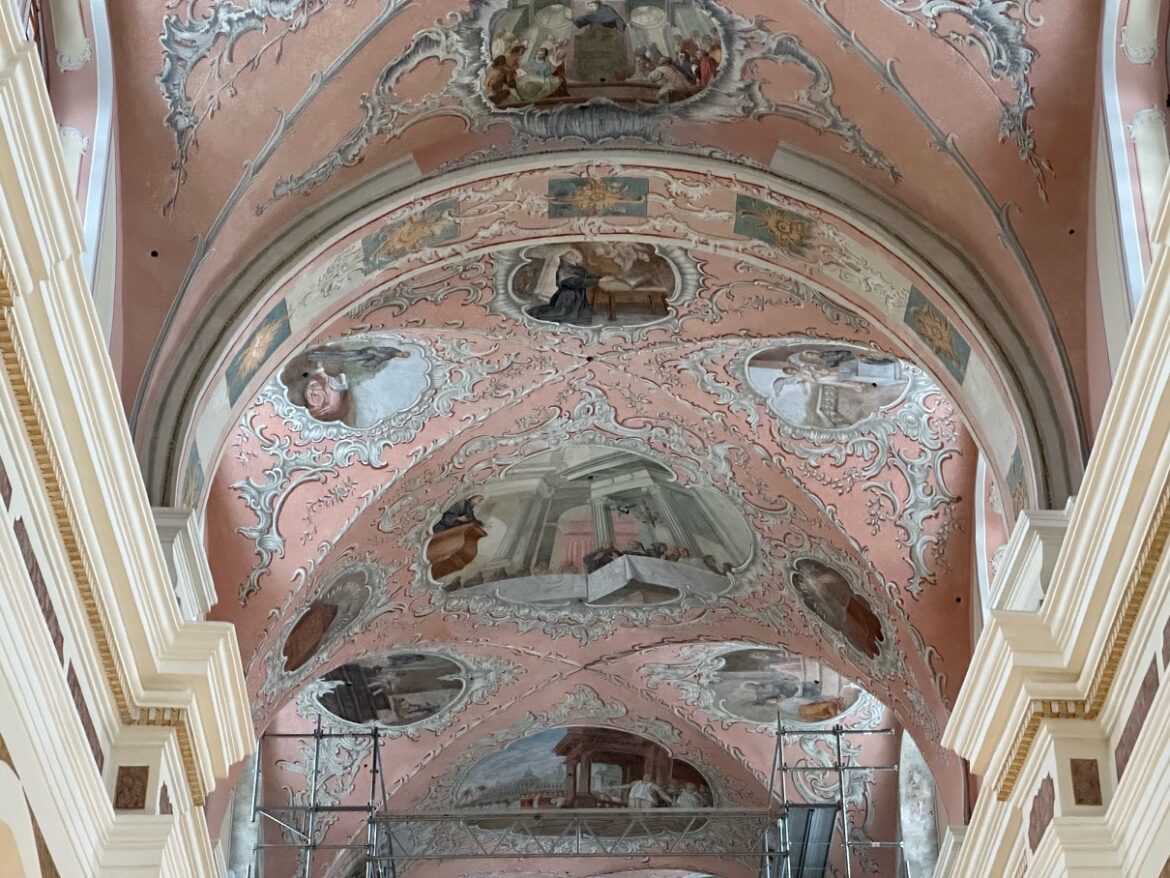The Franciscan Church of the Assumption of the Blessed Virgin Mary in Vilnius displayed 18th-century polychromies by Franciszek Niemirowski. The 22 paintings of the life of St Anthony of Padua have regained their former splendour thanks to conservation work, financed by the programme of the Ministry of Culture and National Heritage (MKiDN) ‘Protection of Cultural Heritage Abroad’.
‘The protection of cultural heritage abroad is one of the priority tasks of the Ministry of Culture and National Heritage, and the conservation of the polychromies in the Church of the Assumption of the Blessed Virgin Mary in Vilnius, while being an extraordinary example of the common history of Poland and Lithuania, is the best proof of this’, wrote the Secretary of State at the Ministry of Culture and National Heritage, General Conservator of Monuments Bożena Żelazowska in a letter to the participants of the ceremonial presentation.
The 18th-century paintings on the top of the church’s façade and the polychrome on its vault were commissioned by the Provincial of the Vilnius Franciscan Order. Franciszek Niemirowski also decorated the walls of the church with paintings of scenes from the life of the Virgin Mary and St Francis, and painted figures of apostles and saints in the medallions on the pillars. The frescoes on the vault in the Franciscan Church in Vilnius are the only surviving and documented work of Niemirowski.
“The importance of this artist, now sadly somewhat forgotten, is evidenced by the fact that he frequented the court of King Stanisław August Poniatowski and accepted commissions from the monarch”, noted Bożena Żelazowska.
The restoration of the vault included more than 500 m² of paintings depicting, among others, 22 scenes from the life of St Anthony of Padua.
“Special recognition is due to all the conservators who, over the course of a decade, performed a titanic task of cleaning, protecting and restoring these priceless paintings. It is thanks to their personal commitment that it is possible to preserve the polychrome for future generations”, noted the General Conservator of Monuments.
Arkadiusz Słomczyński





